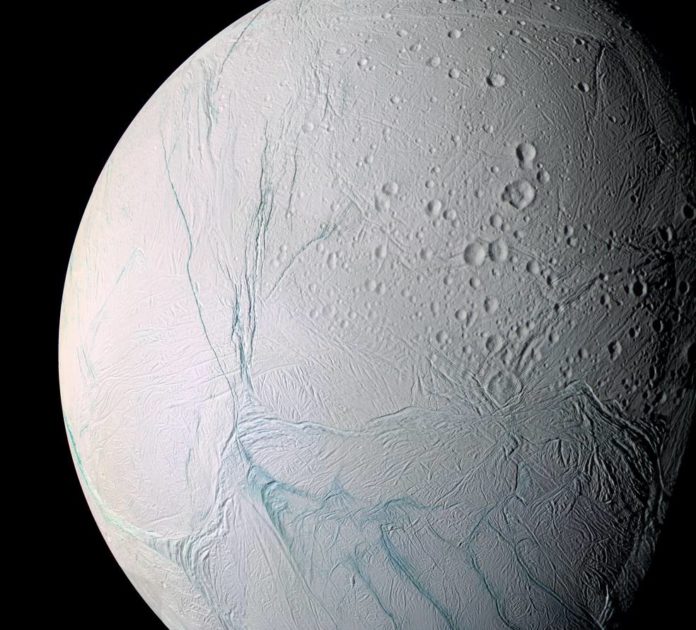
Saturn’s icy moon is cold outside but warmer inside. Enceladus, the icy moon has now given a new dimension to the scientist regarding its geology.
A new study in the journal Nature Astronomy reported that the south polar region of Saturn’s icy moon Enceladus is warmer than expected, just a few feet below its icy surface. This, thereby suggests that Enceladus’ ocean of liquid water might be only a couple of miles beneath this region. The paper is titled, Thermally anomalous features in the subsurface of Enceladus’s south polar terrain.
The report read, “In 2005, Cassini witnessed water-rich jets venting from four anomalously warm fractures, also called sulci. It observed these near the south pole of the moon”. This suggests, the source of the ejected material is a large underground ocean.
It further read, “Cassini’s RADAR instrument observed the terrain closely, targeting an area few kilometers north of the active sulci. It recorded the microwave thermal emission, revealing a warm subsurface region. Interestingly, these anomalies coincide with large fractures, structurally related to the sulci”.
“The observations suggest that a liquid reservoir could exist at a depth of only a few kilometres under the ice shell at the south pole.”

Credits: Nature Astonomy, Paper-Thermally anomalous features in the subsurface of Enceladus’s south polar terrain
According to the report, the dormant fractures lying above the moon’s warm, underground sea, point to the dynamic character of Enceladus’ geology. It also suggests that the moon might have experienced several episodes of activity, in different places on its surface.
Surprisingly, the finding agrees with the results of a 2016 study. A team independent of the Cassini mission estimated the thickness of Enceladus’ icy crust.
Linda Spilker, Cassini Project Scientist, said, “Finding temperatures near these three inactive fractures that are unexpectedly higher than those outside them adds to the intrigue of Enceladus”. She also added, “What is the warm underground ocean really like and could life have evolved there? These questions remain to be answered by future missions to this ocean world.”
























